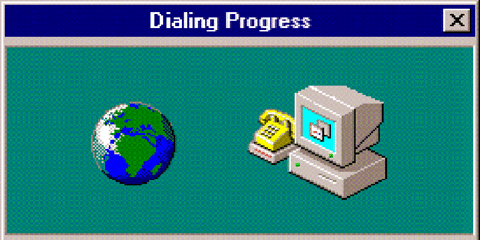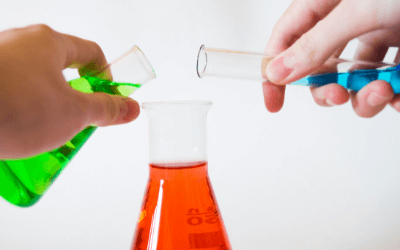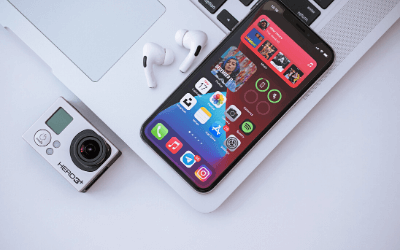Did you know that the first email blast was sent in 1978 and generated over $13 million in sales? Let that sink in. That means email marketing has been around for more than 40 years. We’ve come a long way since the 1970s.

Thanks to new A/B testing tools and email marketing automation systems, marketers are now able to test different subject lines, call-to-action buttons, imagery, copy wording, and color schemes with the same audience at scale. This ability to rapidly test hypotheses is known as A/B split testing.
Generally speaking, there are two key advantages of A/B testing in email marketing:
It allows you to see which version of your email performs better.
You can measure how significant each test element is when it comes to affecting future campaigns.
With that being said, let’s take a look at some actionable best practices to keep in mind and pitfalls to avoid when it comes to A/B split testing email marketing.
Be Creative With Your Hypothesis
In order for a test to be scientifically significant, you must have a strong hypothesis and only test one variable at a time. That means you have to have a good reason why one version is going to outperform the other.
In general, marketers should get into the habit of writing out their hypotheses before they begin designing or writing any copy for their tests. The more detailed your hypothesis is, the better results you will see from your test.
Speak Directly to an Audience’s Pain Points
Your subscribers want something that solves a pain point or delivers a benefit that cannot be found elsewhere. If your content can meet those needs, you will be able to convert more of your subscribers into customers.
As an email marketer, it is important that you always keep this goal in mind when writing copy for tests. Stuck between two pain points? Use that as your test. Make the pain point loud and clear in a bold headline and then test between the two options.
Using Subject Lines That Are Personalized and Highly Relevant
It’s not easy to personalize subject lines, especially given the limited character limits some email clients place on them. However, the most successful marketers are constantly testing out new strategies for personalizing subject lines.
It can definitely lead to significant lifts in click-through rate (CTR). Most marketers also recommend using a single call-to-action per test so you can see which version converts better on its own merits.
Don’t Shy Away From Using Colors or Imagery When Testing
There is a lot of debate regarding the value that colors and imagery have on email marketing. Here’s what we know: colors affect people psychologically, which means they can also be used to elicit certain kinds of responses.
Email A/B testing tools generally allow you to experiment with different color palettes or images for your tests. If done right, these variables could lead to significantly increased opens, higher click-through rate (CTR), conversion rates, or revenue generation per email sent.

Don’t Rely Solely on Subject Line Testing
Many marketers seem content splitting their efforts between testing subject lines and trying out new imagery or colors. However, there are other factors that need attention as well. For example, personalization should always be tested. As we touched upon earlier, call-to-action (CTA) buttons and imagery should always be considered for testing too.
Be Aware of the Pitfalls to Avoid in A/B Testing
There are a few pitfalls that many marketers resign themselves to:
- Lack of Creativity: The same tired subject lines and button designs tend to get recycled ad nauseum. Take a risk and test it.
- Using Poor Data: Just because you saw what rate your one email was opened at doesn’t mean it was truly representative of your audience. Consider your sample size.
- Incorrect Assumptions: Your test could have failed without you realizing it. Did you change more than one variable?
- Non-Randomized Trials: This is how real science works. Your testing groups must be random for the experiment to be considered valid.
Overall, A/B testing can bring about major improvements in marketing metrics such as higher open rate, click-through rate (CTR), increased conversion rates, or revenue generation per email sent. It’s important to always have a strong hypothesis in place before you begin designing tests and make sure you align your copy with the goals of your email program.
Examples of A/B Testing
In order to make every email address count, it’s important that we run A/B tests, but only the right type of A/B test. From personalized subject lines to color palettes and copy — there are a number of variables that should be experimented on in order for us to know if they truly work or not.
The Good: Subject Line Test Affirms Hypothesis
A marketer wanted to see how subject lines would affect their click-through rate (CTR), open rate, and number of conversions. Going into it, they had a hunch that using “3 Free Tips” as opposed to just “Free Tips” would yield better results.
They were correct: the test opened 11% more than the original subject line, CTR increased by 13%, and the number of conversions grew by 10%.
The reason why this A/B test was successful was because they only changed one variable (the subject line). This single change resulted in increases in several metrics.
The Bad: Button Color Test Proves Indifference
A marketer wanted to see how changing the color of their CTA button would affect their number of conversions. They hypothesized that if they changed the button color from blue to green, it would inspire more conversions.
After running the test, they were surprised to see that changing the CTA button color had absolutely no effect on their conversion rate. Upon viewing the button, it was still obvious to the user what action they were supposed to take, regardless of its color.
This is a great example because it shows that marketers should avoid making assumptions about what variables will improve results, and instead rely on data-backed observations about their subscribers’ behavior over time before drawing conclusions.
Best Practice: Use the 80/20 Rule
When you’re determining which elements to test to improve your email campaign, it’s important to use the 80/20 rule. The Pareto Principle states that roughly 80% of your business results depend on 20% of your input.
By this logic, for every hundred variables you could test, only 20 are likely to have a significant impact. It’s also helpful to think about these variables in terms of high impact areas, medium impact areas, and low impact areas within your email marketing campaigns. Then, prioritize your testing activities from there.
Conclusion
A/B testing in email marketing is a great way to make sure that your campaigns are as effective as possible, but only if they’re performed correctly. For every 100 variables you could test for your next email campaign, only 20 will have a significant impact on business results.
Do you think you know which ones those are?
If not, you might want to consider hiring a team of experts that can help guide your strategy and A/B testing in email marketing.
Designzillas can help you take your business to the next level, contact us today!






